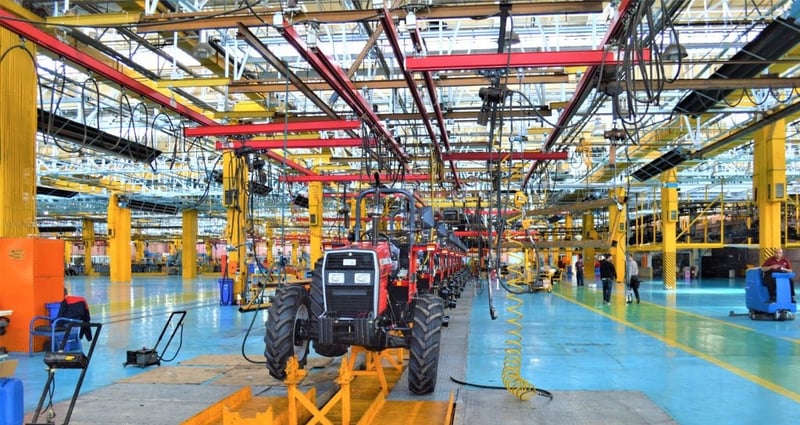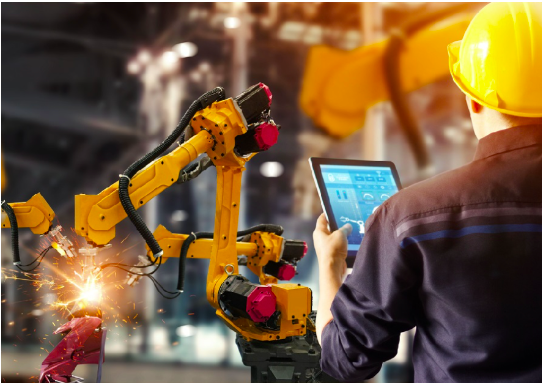Jetzt umsteigen Sie auf "Handheld-Terminals der neuen Generation"
Handheld-Terminals werden seit vielen Jahren zur Erleichterung der Abläufe, insbesondere in Lagern, eingesetzt. Obwohl es im Vergleich zur...
Over the past decade, the use of wearable devices has spread through a number of industries. Wearable devices could help the IIoT achieve massive productivity and efficiency gains.
WIIoT (Wearable Industrial Internet of Things) is a rapidly evolving field that will see many advancements in the coming years. Indeed, according to Bain & Company’s survey, by 2022, over 95% of industrial companies would have implemented IoT projects. Wearable devices would be a vital component of those endeavors.
The high-speed data networks that exist in industrial premises environments provide an atmosphere where wearable IIoT can flourish. The ability to communicate with a variety of sensor data is critical for wearable data-based technologies. How data is collected and then used to make practical decisions is an important aspect of how wearable devices can evolve through industries.

Wearables especially in logistics, automotive, and e-commerce sectors tend to weigh less and be ergonomic. For instance, Glogi smart gloves produced by Thread In Motion, are designed as wearables but not as separate devices in order to increase efficiency. So that none of the blue collars has to put the device aside to continue working.
Consider warehouse staff who must collect products from great heights. If they have their hands free, they are much less likely to lose the things they are working with. Wearable technology can be fitted with alerting features that can communicate with industrial vehicles such as forklifts, enhancing protection even further. Physical harm or deaths can be avoided as a result of this.
As everything is trying to be simplified in today’s world, new wearable technology enables workers to keep doing what they always do, but eliminate the flaws. It is crucial for companies to implement new technologies in a short period of time and without any complications. Easily integrated and scaled technologies are more in demand today.
Thread In Motion’s customized gloves for every particular industry is so easy that, after the first launch, there is no need to learn anything complex. Rather than creating a learning curve, people can focus on their own job and do it faster and safer with the help of the gloves.
The first reason that companies are now digitizing their processes is to save time. It can be admitted that the purpose of technology, in general, is to do things in a shorter time. Therefore, saving time is the priority of the wearables industry.
For example, Thread In Motion’s smart gloves IWO, which is particularly designed for assembly processes, reduces time spent up to 4 seconds. Even though it seems like a small amount of time, in mass production processes, reducing half of the time spent for one assembly, saves up to 30 million seconds in a day, which directly affects the production speed.
9 out of 10 errors are made by a human in a factory. As the aim of the wearables is to protect the personnel but not to eliminate the human workforce, wearables create a safer and efficient work environment.
Acoustic, optic, and haptic wearables which can easily vibrate and/or give signals when a person does a mistake in a factory, intends to prevent human-related errors. TIM’s logistics sector solution which has the qualifications to do so improves the quality of the work.
If you are also interested in IIoT based wearables, here are our products designed to be used for custom industries.
Teilen und folgen Sie uns auf!
.jpg)
Handheld-Terminals werden seit vielen Jahren zur Erleichterung der Abläufe, insbesondere in Lagern, eingesetzt. Obwohl es im Vergleich zur...

The manufacturing and logistics industries have begun the transition from industry 4.0 to industry 5.0. Each field in manufacturing, in particular,...

Das Potenzial des IoT (Internet der Dinge) hat sich in Organisationen aller Branchen gezeigt. Richtig eingesetzt, kann es Prozesse glätten, die...